Main Level Floor Plans For Three Bedroom One-Story Craftsman

Upper Level Floor Plans For Three Bedroom One-Story Craftsman
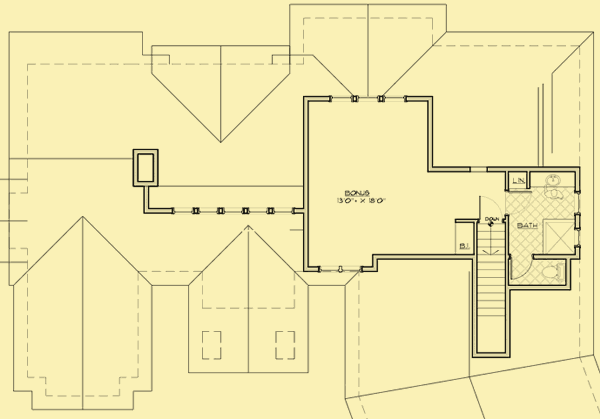

| Total Above-ground living area | 2350 |
| Main | 1921 |
| Upper | 429 |
| Lower level living area | |
| Footprint The dimensions shown are for the house only (indicating the smallest area needed to build). They do not include the garage, porches, or decks, unless they are an integral part of the design. |
62 W x 41 D |
| Above-ground bedrooms | 3 |
| Above-ground bathrooms | 2.5 |
| Master suite | Main |
| Lower-level bedrooms | 0 |
| Lower-level bathrooms | 0 |
| Stories | 1 |
| Parking | garage |
| Number of stalls | 2 |
| House height
Traditionally, the overall height of a house is determined by measuring from the top of the finished floor on the main level, to the highest peak of the roof.
|
23.5 |
| Ceiling heights Raising or lowering the height of the ceilings on one or more floors of a house is often a simple change that can be made by your builder. However, if you want to raise the ceiling of the main floor of a two-story home, there has to be room to add steps to the existing staircase. |
|
| Main level | 9 |
| Vaulted ceilings
We consider a room to be vaulted if the ceiling - whether flat, angled, or curved - is above 10 feet at its highest point. If you prefer that one or more rooms not be vaulted in your new home, this is a very simple change that your builder can make for you.
KEY TO SYMBOLS: LR = Living Room/Great Room DR = Dining Room FAM = Family Room FOY = Foyer STU = Study/Library/Den KIT = Kitchen SUN = Sunroom MBR = Master Bedroom MB = Master Bath LOF = Loft OFF = Office/Guest Room REC = Recreation/Game Room ALL = Entire Level |
LR, DR, FOY, MBR, BR2, BR3 |





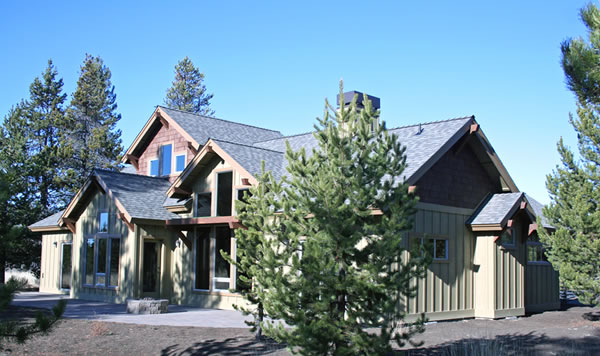

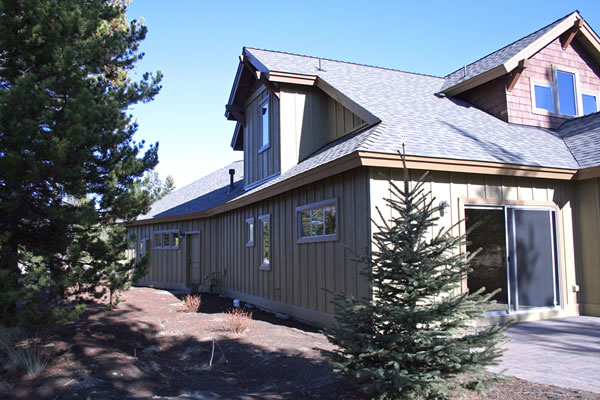
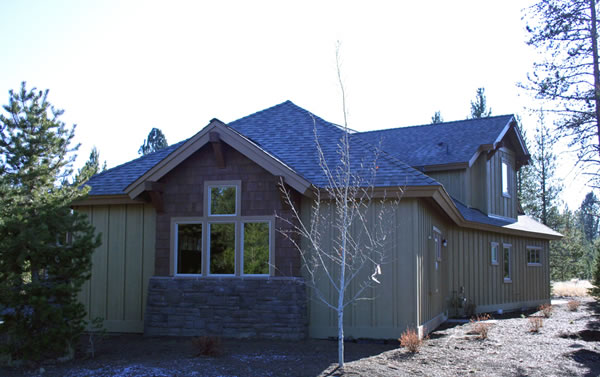
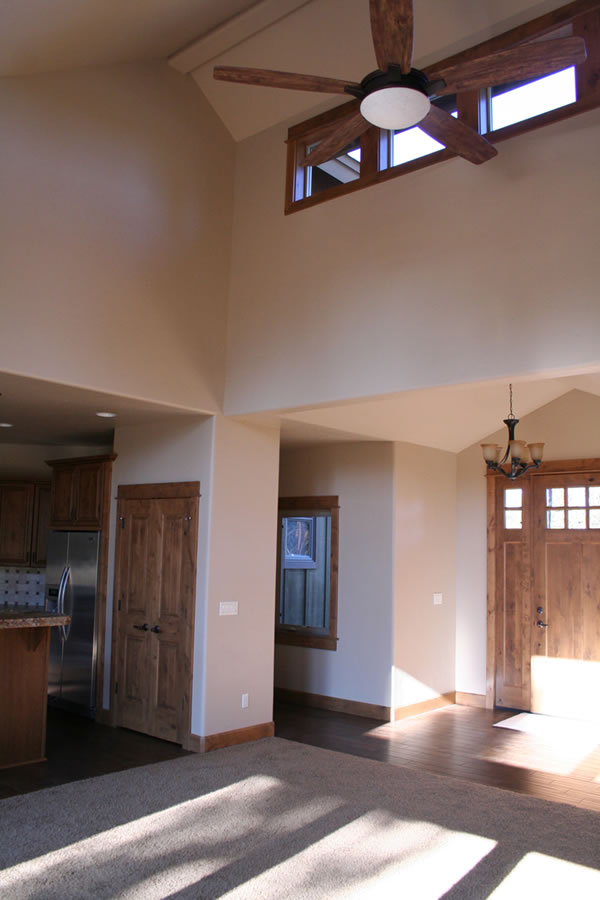
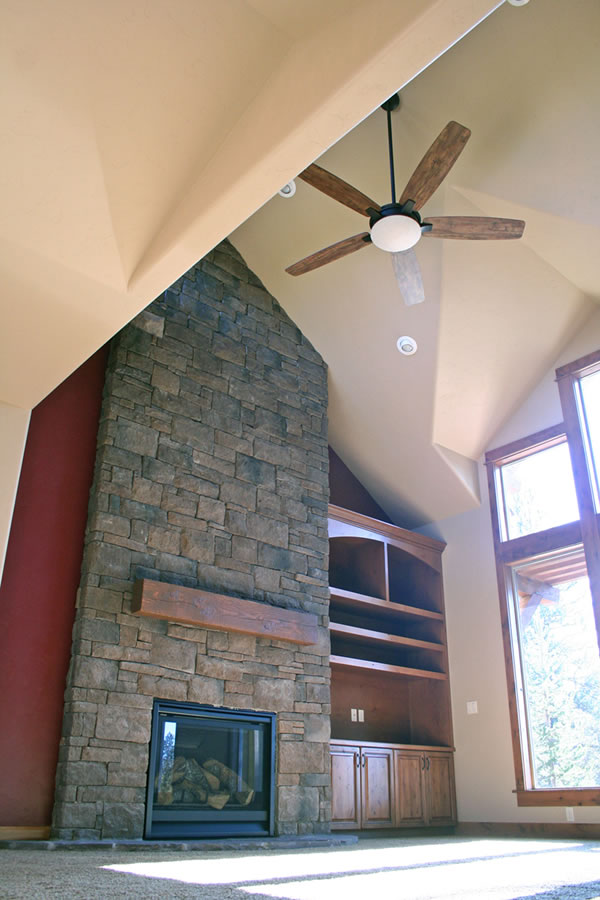
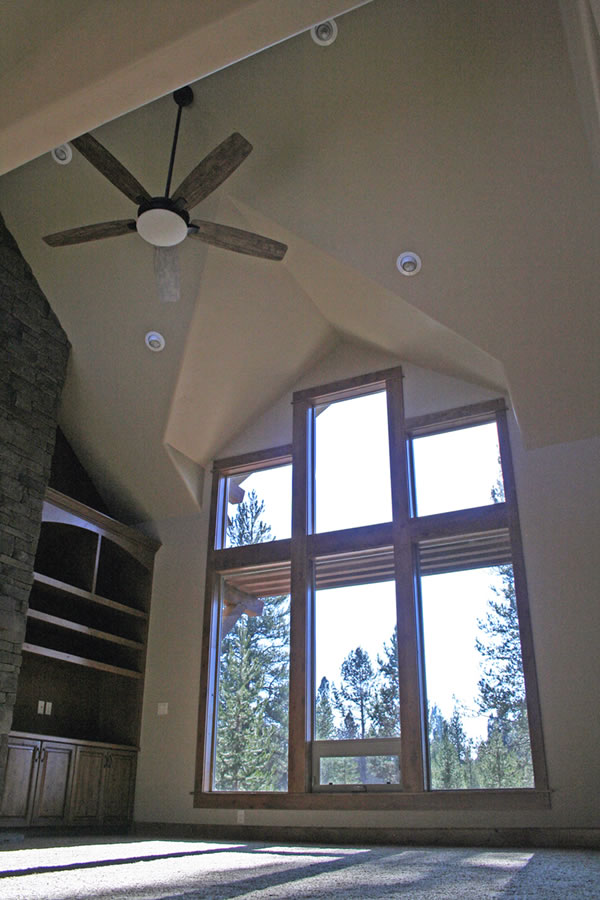

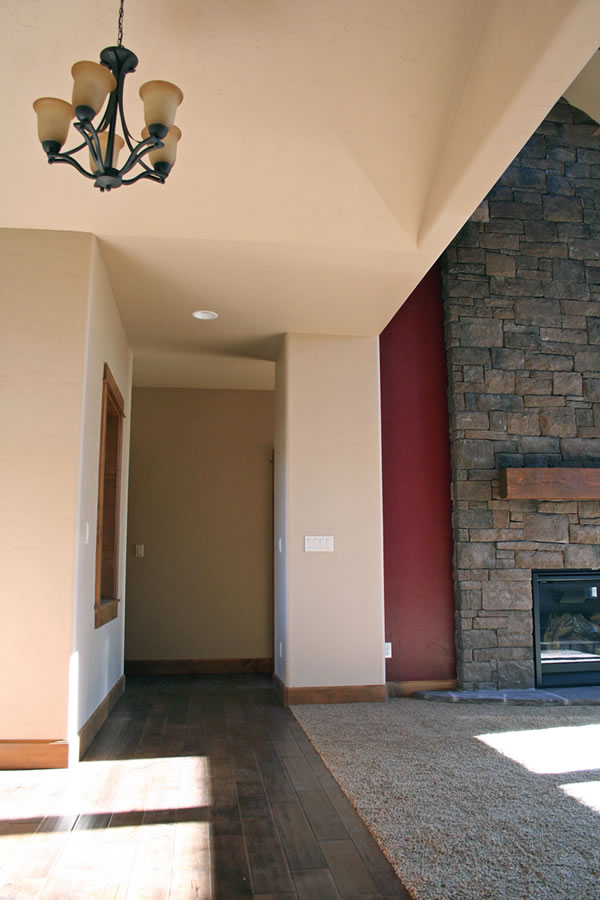
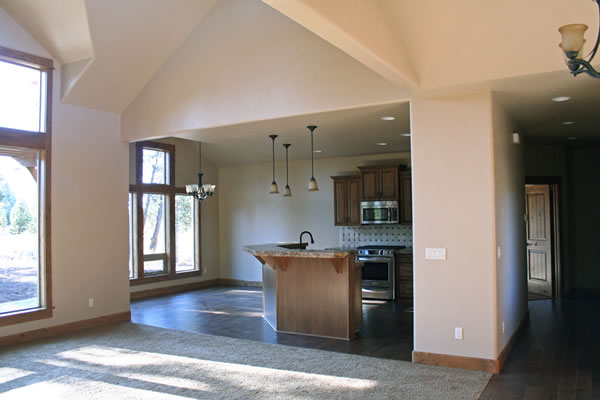
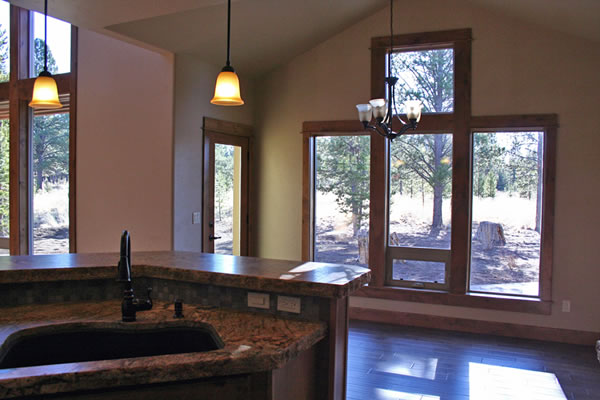
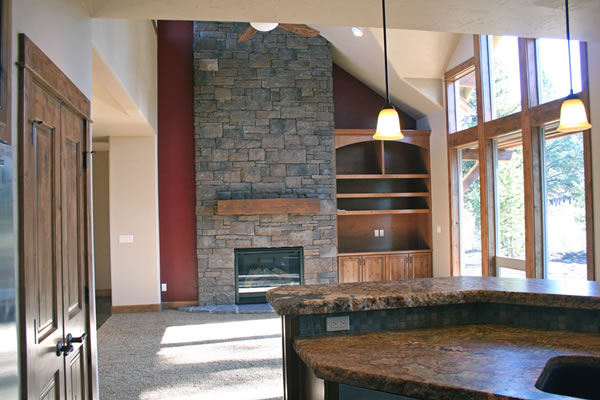
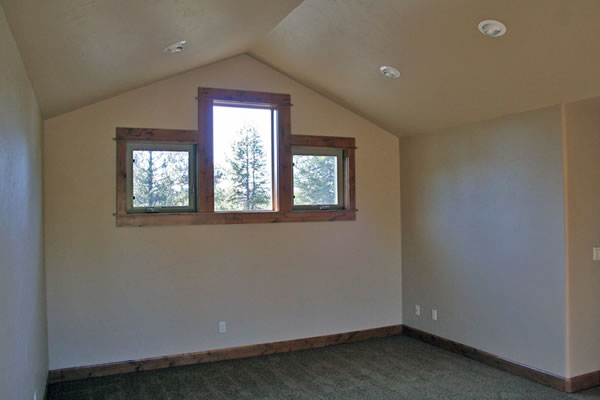
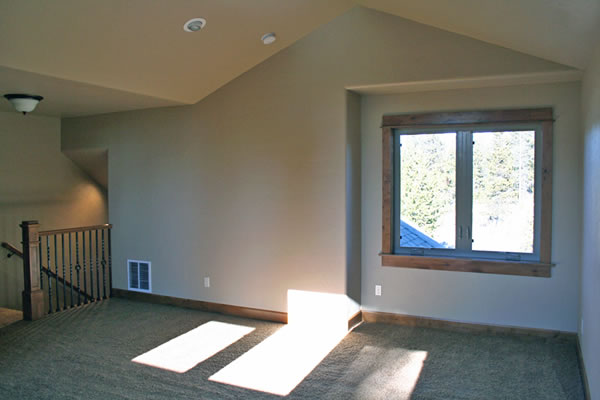
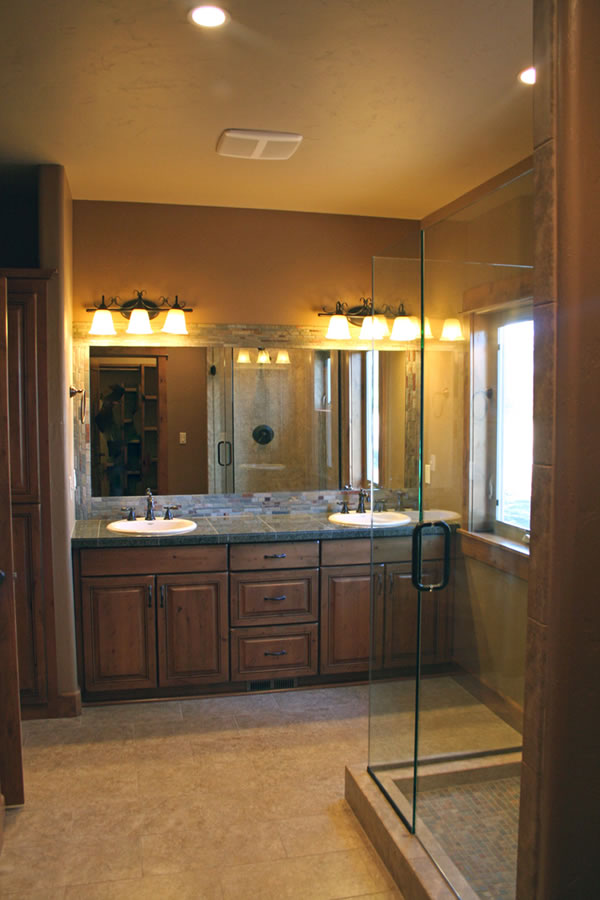

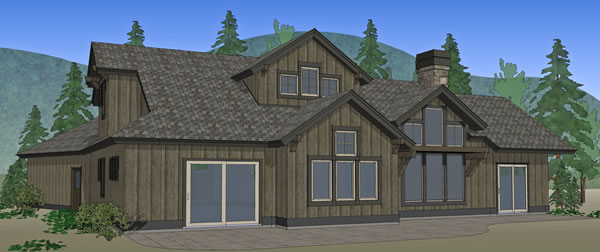
The covered entry, as well as four other front–facing gables, has the classic wood detailing that distinguishes Craftsman–style homes. As you step inside, the foyer has a ceiling that vaults to 11′ in the center, and just ahead after walking under a dropped soffit the ceiling in the great room soars to 15’6″ with angles in several directions. There’s a fireplace on your left (which can also be enjoyed from the kitchen and the dining room), while the far wall is filled by large picture windows with windows above them that go to ceiling height. And on the opposite wall there’s a row of clerestory windows that allow even more natural light to flood the room.
Great room, kitchen and dining room are all open to each other. The ceiling drops to 9′ over the kitchen (to accommodate the guest bedroom upstairs, as well as to give it a cozy feeling) before vaulting up once more in the dining room. Once again the rear wall is filled with glass for views to and through the terrace, and a glass door opens to it. The kitchen features a large center island with a raised bar for casual dining or serving on the outer edge, and sinks on top so one can do the dishes while participating in the activities in the house.
A short hallway off the foyer that leads to the master suite also provides access to a powder room, a laundry room, stairs to the guest suite upstairs, and a two–car garage. The master bedroom has views to the side and the rear, where sliding glass doors open to the terrace and a built–in spa tub. The bath has two sinks, a large shower, a storage closet, and a walk–in closet.
Both bedrooms on the other side of the house share a full bath set between them, and both enjoy views in two directions. The ceiling in bedroom 2 vaults to nearly 12′, while in bedroom 3 the ceiling vaults to just over 11′.
If you choose to build out the upper level space, there’s a generous bedroom space with a ceiling that vaults to 11′ and views to both the front and the rear, and a full bath.
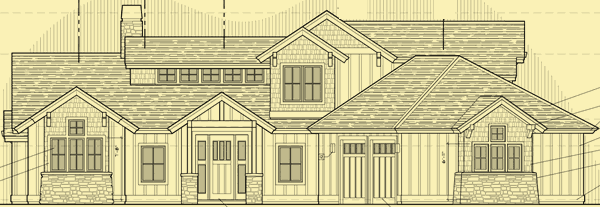

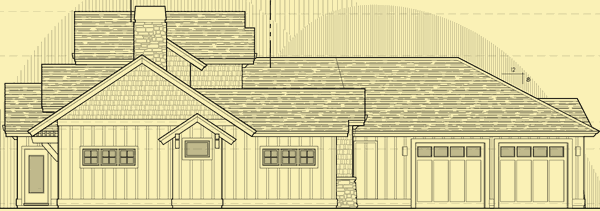

The original homeowners chose a combination of board & batten vertical siding, cedar shingles, and stone veneer for the exterior of this handsome one story Craftsman house. This home has three bedrooms – with the master on one side and two more on the other – as well as an optional guest suite over the kitchen and part of the master bath. It provides terrific views to the rear, where a terrace spans the entire width of the house. The ceiling in the great room has many angles, and vaults to nearly 16', while the master bedroom has a hipped ceiling that rises to 14' in the center.